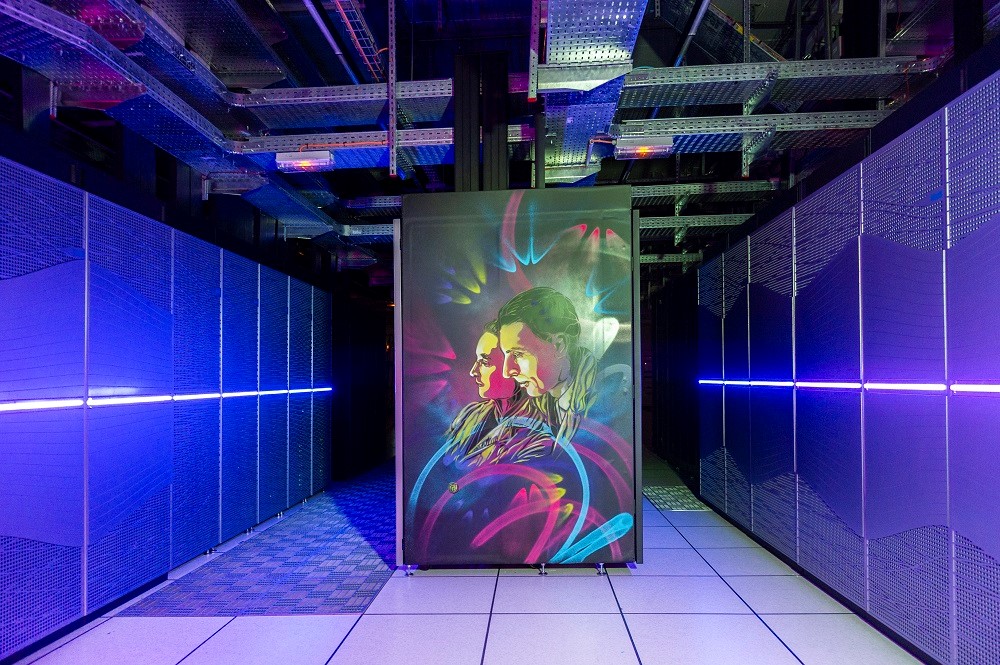GENCI, CEA, CPU and Atos arm European scientists against COVID19 with HPC facilities
Paris, April 28, 2020
Two of the most powerful supercomputers in France, Joliot-Curie, operated at the CEA’s supercomputing center (TGCC), and Occigen, operated at CPU’s supercomputing center (CINES), are providing urgent computing access to large computer resources to European research teams involved in the fight against COVID-19. The aim is to perform epidemiological studies of COVID-19 virus spread, understand its molecular structure and behavior and massively screen and test potential future molecules, to accelerate the search for an effective vaccine and support the global fight against the virus. Both supercomputers are based on Atos’ BullSequana platform, global leader in digital transformation.
After only a few weeks of GENCI’s COVID 19 fast track access, GENCI, the French national high-performance computing agency, announces that there are now more than 20 scientifically diverse COVID19 projects, running on its 3 national supercomputers among which are Joliot-Curie and Occigen, together with Jean Zay at IDRIS, with the dedicated help of support teams in these centers.
Joliot-Curie at TGCC
Joliot-Curie, with its 22 petaflop/s, is the most powerful supercomputer in France dedicated to academic and industrial open research. As part of PRACE (Partnership for Advanced Computing in Europe), European scientists are relying on Joliot-Curie to run today three COVID-19 large scale projects in the context of the PRACE COVID-19 Fast Track call. One project simulates the functional proteins of the SARS-CoV-2 virus built from millions of atoms to understand the mechanisms of the virus infection in order to develop therapeutics. The other project uses computational screening, a well-known technique used in drug discovery, to identify and improve viral protein inhibitors, molecules which are capable of blocking the SARS-Cov-2 protein. This project could help supporting the development of a treatment to slow down the COVID-19 outbreak.
The last project combines the study of the effect of antimalarial drugs on various human heart pace types taking into account a variety of comorbidities that may be present in the infected population, and also uses computational fluid dynamics (CFD) to better understand the complex hemodynamics associated with Nord-South Syndrome.

In addition to these PRACE COVID-19 Fast Track projects, teams of researchers are carrying out preparatory simulations on priority national allocations of computing capacity on the Joliot-Curie supercomputer. For example, researchers from the Grenoble Interdisciplinary Research Institute (IRIG) and the CEA’s Joliot Institute are working on the search of inhibitors in COVID-19. The SPIKE protein allows the virus to penetrate the cell membrane. Thanks to the simulation of the electronic structure of the protein and the associated inhibitor, it is possible to provide precise information on the strength of the inhibition but also structural information to identify the amino acids concerned and their associated polarities. This initial work made it possible to validate the approach and thus to submit a 15-million-hour project to PRACE to study the microscopic and thermodynamic factors that may or may not favour the interaction between the main SARS-CoV-2 protease and promising new inhibitors. The objective is to build an ab initio in silico tool to estimate accurately the interaction properties of proteins interacting with all types of ligand families.
Occigen at CINES
Among the COVID-19 related projects on Occigen, researchers are running simulations to study the SARS-Cov-2 helicase enzymes in further detail, in order to better understand the genetic make-up of the virus. It is also being massively used – daily beyond 40,000 cores, around half of the total Occigen’s capacity shaped by 86,000 cores for 3.5 petaflop/s – with computational screening methods, to virtually test more than 1.5 billion molecules a thousand of which will be synthesized and tested in labs for their ability to inhibit SARS-Cov-2. The scale of this virtual testing is unprecedented and is only made possible due to the computing power of the supercomputer.

Stephane Requena, CTO of GENCI, said: “We’re proud with the 3 national centers to be in fight against COVID-19 and that our powerful supercomputing and AI capabilities are being used by researchers to contribute to these efforts. We hope that these computational findings from the 20+ projects currently running on our systems, will support researchers and scientists to understand more about the virus and ultimately help develop a treatment to stop this pandemic.”
Pierre Barnabé, Head of Public Sector & Defense and Head of Big Data & Cybersecurity, Atos, added: “We are honored to support those researchers and scientists in their work to help fight against COVID-19. By using the capability of our BullSequana supercomputers, which run thousands of times faster than standard computers, we are enabling them to save valuable time and helping find a cure to this pandemic.”
Christine Ménaché, Head of the CEA’s Very Large Computing Center (TGCC) and Boris Dintrans, Director of CINES jointly state: “All the TGCC’s and CINES’s support teams have been mobilized in a strong spirit of solidarity to meet the expectations of all users and in particular these scientific projects in connection with Covid19.”
Supercomputers have tens of thousands of processors that work together to perform large calculations, process and analyze large amounts of data using AI algorithms. GENCI’s altogether combined supercomputing systems represent today more than 41 petaflop/s of computing capacity and 100 petabytes of massive data storage.







